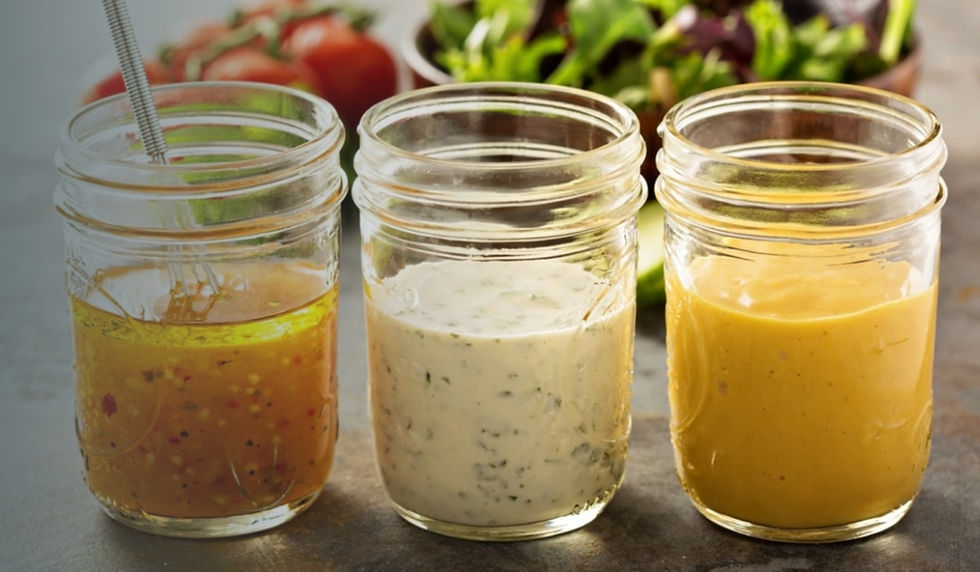The Role of Emulsifiers in Flavour Formulation
- Digital Marketing
- Jun 5
- 4 min read
In the world of food and beverage product development, flavour is king. It determines whether a consumer will return to a product again and again. But behind every mouthwatering taste experience lies a complex science. One of the often-overlooked heroes in this process is the emulsifier. These unsung ingredients play a vital role in ensuring that flavours are well-dispersed, stable, and consistent in a wide variety of food and beverage products. In this blog, we’ll delve into the role of emulsifiers in flavour formulation—how they work, why they matter, and how they influence the final product that reaches consumers.

What Are Emulsifiers?
Emulsifiers are surface-active agents (surfactants) that help mix two immiscible substances, such as oil and water. These substances naturally repel each other, but emulsifiers stabilize their mixture by reducing surface tension and forming an emulsion. Think of salad dressing—without an emulsifier, the oil and vinegar separate quickly. With an emulsifier like lecithin or mustard, the mixture stays stable and uniform.
Chemically, emulsifiers have two ends: a hydrophilic (water-loving) head and a hydrophobic (oil-loving) tail. This dual nature allows them to surround oil droplets in water (or vice versa), creating a stable interface that keeps the components from separating.
Why Flavour Needs Emulsification
Flavour formulation involves both volatile and non-volatile compounds. Volatile compounds are responsible for aroma, while non-volatile compounds influence taste. Many flavour compounds are oil-based, which poses a challenge when they're incorporated into water-based systems like soft drinks, sauces, or dairy products.
This is where emulsifiers step in.
Without emulsifiers, the oil-based flavours would float on top or form droplets, leading to uneven flavour distribution, poor mouthfeel, and an unstable shelf life. Emulsifiers help solubilize and stabilize these oil-based flavours in water-based systems, ensuring consistent taste and aroma from the first sip or bite to the last.
Key Functions of Emulsifiers in Flavour Formulation
Stability Emulsifiers prevent the separation of flavour ingredients, ensuring a uniform distribution. This is crucial for products like flavoured waters, dressings, and ice creams, where phase separation can compromise both visual appeal and taste.
Controlled Release of Flavour Some emulsifiers can control the release of flavour molecules in the mouth. This affects how we perceive the flavour—whether it hits immediately, lingers, or builds slowly. This characteristic is particularly important in chewing gums, candies, and dairy-based desserts.
Enhanced Shelf Life By stabilizing the emulsion, emulsifiers reduce the likelihood of flavour degradation or separation during storage and transportation. This helps maintain the intended sensory profile of a product over time.
Improved Mouthfeel and Texture Emulsifiers can enhance the creaminess and smoothness of a product, contributing to overall mouthfeel. In products like chocolate, mayonnaise, and ice cream, emulsifiers improve texture while also ensuring flavour consistency.
Compatibility with Other Ingredients In complex formulations with vitamins, preservatives, colourants, and functional additives, emulsifiers help harmonize the system. This compatibility ensures that flavours are not overwhelmed or diminished by other ingredients.
Common Emulsifiers Used in Flavour Formulation
Lecithin Extracted from soy or sunflower, lecithin is widely used for its natural origin and versatile emulsifying properties. It’s often found in chocolate, baked goods, and dressings.
Mono- and Diglycerides These emulsifiers are commonly used in bakery products and beverages. They are effective in stabilizing emulsions and improving mouthfeel.
Polysorbates (e.g., Polysorbate 80) These synthetic emulsifiers are particularly effective in incorporating essential oils and flavour concentrates into water-based systems like soft drinks and syrups.
Gum Arabic A natural emulsifier used in the encapsulation of flavours, especially in powdered flavour formulations. It offers excellent stability and dispersibility.
Sucrose Esters These emulsifiers provide a clean label alternative for modern food applications, offering good solubility in both oil and water phases.
Applications Across the Food Industry
Beverages: Emulsifiers allow clear and stable distribution of citrus oils and other flavour compounds in drinks. They also reduce ringing and oil separation in bottled products.
Confectionery: Emulsifiers help in controlling the release of flavours in gums and hard candies, enhancing the consumer experience.
Bakery: In addition to improving dough stability and volume, emulsifiers ensure that flavour additives like vanilla or fruit essences are uniformly distributed.
Dairy: Emulsifiers prevent creaming and help achieve the desirable mouthfeel in flavoured yoghurts, ice creams, and milk-based drinks.
Savory Products: From sauces to soups, emulsifiers stabilize spice oils and essences, maintaining the product’s taste and appearance.
Challenges in Using Emulsifiers in Flavour Systems
While emulsifiers offer multiple advantages, they are not without challenges. Selecting the right emulsifier requires a careful understanding of the food matrix, processing conditions, desired shelf life, and regulatory compliance. Overuse or inappropriate selection can lead to off-flavours, undesirable textures, or regulatory concerns in certain markets.
Conclusion
Emulsifiers are critical enablers in flavour formulation. They help create stable, consistent, and enjoyable food and beverage products by ensuring that flavour compounds are evenly dispersed and retained throughout the product's life cycle. Whether it’s the zing of citrus in a sports drink, the smooth chocolate in a dessert, or the lingering spice in a sauce—emulsifiers are behind the scenes making sure those flavours perform at their best.
As consumer demand for clean labels and functional foods increases, the role of natural and multifunctional emulsifiers will continue to grow. Food scientists and flavour formulators must continue to innovate in this space to ensure delicious, stable, and memorable taste experiences for all.







Comments